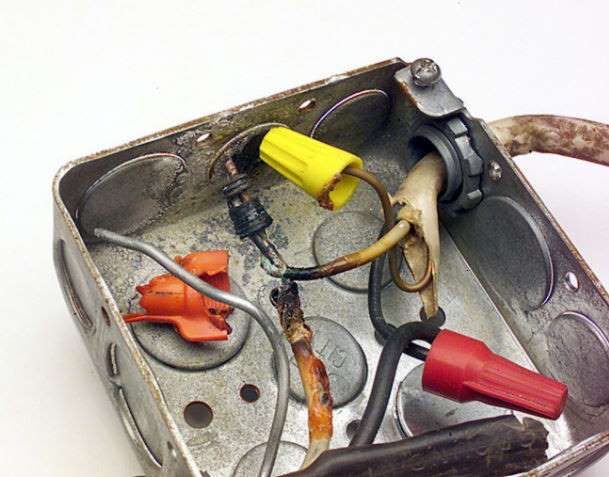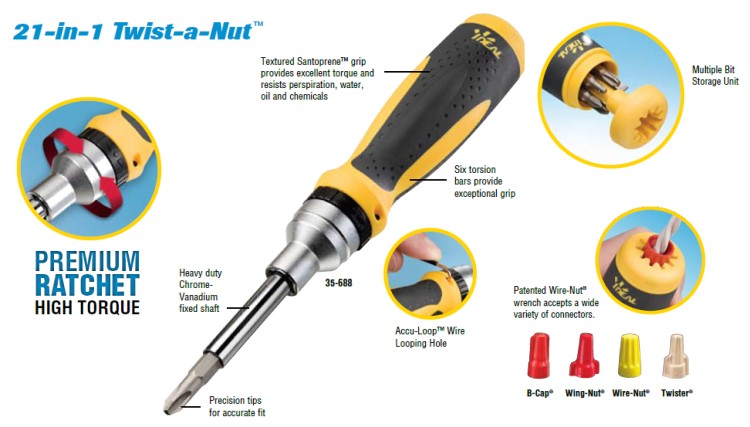ptonsparky
Tom
- Occupation
- EC - retired
My bad, but hopefully my point is not lost because of it Hal
I've found the actual bit matters, most breakers and devices are manufactured w/screws that will accept multiple styles
well first the listing/rating of any connector should be addressed....

2ndly, the 'pretwist vs. no pretwist ' debate boils down to the area of contact w/in the wirenut 'spring'.....anecdotally, i find that cutting the very ends the same allows for more contact of all wires introduced.
Just what their failure rate is juxtaposed to other connectables (wago, screw block, backstab) would be an appreciable study......
http://www.ieee-holm.org/h2004/h2004antler.pdf

3rd, there are many tools on the market exclusively for wire nuts>

thus a torque spec must exist....
Addressing specifics is what engineers do , usually to extents most would not pursue because they've the patience where most do not Hal.
~RJ~
The contents of the four square looks like a combination of cu to al wire. Not a fair test to most wire connectors, with or without the unevenly cut conductors.







